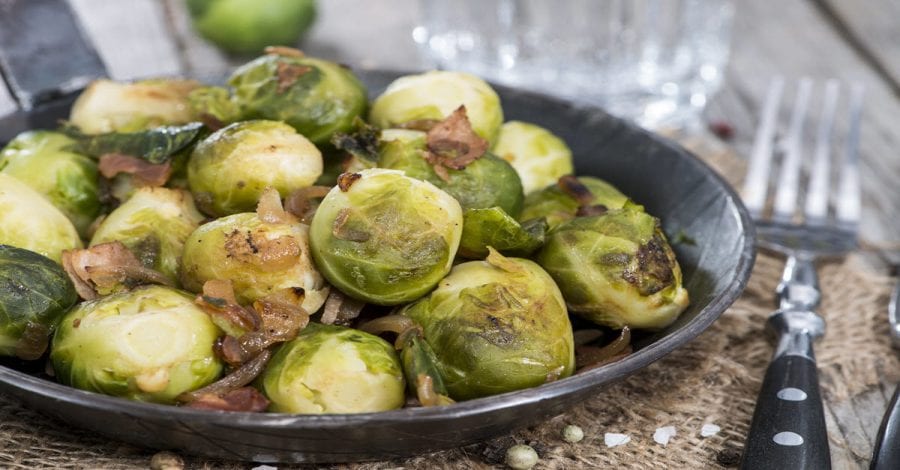EX-CANDIDA Research Review
Kordali, S., Cakir, A., Mavi, A., Kilic, H., & Yildirim, A. (2005). Screening of chemical composition and antifungal and antioxidant activities of the essential oils from three Turkish artemisia species. Journal of agricultural and food chemistry, 53(5), 1408–1416. https://doi.org/10.1021/jf048429n
Juteau, F., Jerkovic, I., Masotti, V., Milos, M., Mastelic, J., Bessière, J. M., & Viano, J. (2003). Composition and antimicrobial activity of the essential oil of Artemisia absinthium from Croatia and France. Planta medica, 69(2), 158–161. https://doi.org/10.1055/s-2003-37714
World Health Organization. “Q&A on artemisinin resistance.” Retrieved October 5, 2020 from https://www.who.int/malaria/media/artemisinin_resistance_qa/en/
Kaat De Cremer, Ellen Lanckacker, Tanne L. Cools, Marijke Bax, Katrijn De Brucker, Paul Cos, Bruno P. A.Cammue, Karin Thevissen
Artemisinins. New Miconazole Potentiators Resulting in Increased Activity against Candida albicans Biofilms. Antimicrobial Agents and Chemotherapy. Dec 2014, 59 (1) 421-426; DOI: 10.1128/AAC.04229-14
Li, W., Mo, W., Shen, D., Sun, L., Wang, J., Lu, S., Gitschier, J. M., & Zhou, B. (2005). Yeast model uncovers dual roles of mitochondria in action of artemisinin. PLoS genetics, 1(3), e36. https://doi.org/10.1371/journal.pgen.0010036
Ahmad, T., & Suzuki, Y. J. (2019). Juglone in Oxidative Stress and Cell Signaling. Antioxidants (Basel, Switzerland), 8(4), 91. https://doi.org/10.3390/antiox8040091
Futuro, D. O., Ferreira, P. G., Nicoletti, C. D., Borba-Santos, L. P., Silva, F., Rozental, S., & Ferreira, V. F. (2018). The Antifungal Activity of Naphthoquinones: An Integrative Review. Anais da Academia Brasileira de Ciencias, 90(1 Suppl 2), 1187–1214. https://doi.org/10.1590/0001-3765201820170815
Nasrollahi, Z., & Abolhasannezhad, M. (2015). Evaluation of the antifungal activity of olive leaf aqueous extracts against Candida albicans PTCC-5027. Current medical mycology, 1(4), 37–39. https://doi.org/10.18869/acadpub.cmm.1.4.37
Zorić, N., Kopjar, N., Bobnjarić, I., Horvat, I., Tomić, S., & Kosalec, I. (2016). Antifungal Activity of Oleuropein against Candida albicans-The In Vitro Study. Molecules (Basel, Switzerland), 21(12), 1631. https://doi.org/10.3390/molecules21121631
Boaz, M., Leibovitz, E., et al. Functional foods in the treatment of type 2 diabetes: Olive leaf extract, turmeric and fenugreek, a qualitative review. Functional Food in Health and Disease. 2011; 1(11): 472-481.
Kimura, Y., & Sumiyoshi, M. (2009). Olive leaf extract and its main component oleuropein prevent chronic ultraviolet B radiation-induced skin damage and carcinogenesis in hairless mice. The Journal of nutrition, 139(11), 2079–2086. https://doi.org/10.3945/jn.109.104992
Khattab, R., Hosny, A., et al. Anti-HSV type-1 activity of olive leaves extract crude form acting as a microemulsion dosage form. African Journal of Microbiology Research. 2016; 10(22): 820-828. Retrieved from https://academicjournals.org/journal/AJMR/article-full-text-pdf/E09C2B158944
Chami, N., Bennis, S., Chami, F., Aboussekhra, A., & Remmal, A. (2005). Study of anticandidal activity of carvacrol and eugenol in vitro and in vivo. Oral microbiology and immunology, 20(2), 106–111. https://doi.org/10.1111/j.1399-302X.2004.00202.x
Chami, N., Bennis, S., Chami, F., Aboussekhra, A., & Remmal, A. (2005). Study of anticandidal activity of carvacrol and eugenol in vitro and in vivo. Oral microbiology and immunology, 20(2), 106–111. https://doi.org/10.1111/j.1399-302X.2004.00202.x
Rajkowska, K., Nowicka-Krawczyk, P., & Kunicka-Styczyńska, A. (2019). Effect of Clove and Thyme Essential Oils on Candida Biofilm Formation and the Oil Distribution in Yeast Cells. Molecules (Basel, Switzerland), 24(10), 1954. https://doi.org/10.3390/molecules24101954
Ghaffar, S., Afridi, S. K., Aftab, M. F., Murtaza, M., Hafizur, R. M., Sara, S., Begum, S., & Waraich, R. S. (2017). Clove and Its Active Compound Attenuate Free Fatty Acid-Mediated Insulin Resistance in Skeletal Muscle Cells and in Mice. Journal of medicinal food, 20(4), 335–344. https://doi.org/10.1089/jmf.2016.3835
Kuroda, M., Mimaki, Y., Ohtomo, T., Yamada, J., Nishiyama, T., Mae, T., Kishida, H., & Kawada, T. (2012). Hypoglycemic effects of clove (Syzygium aromaticum flower buds) on genetically diabetic KK-Ay mice and identification of the active ingredients. Journal of natural medicines, 66(2), 394–399. https://doi.org/10.1007/s11418-011-0593-z
Zwolińska-Wcisło, M., Budak, A., Trojanowska, D., Bogdał, J., & Stachura, J. (1998). Fungal colonization of the stomach and its clinical relevance. Mycoses, 41(7-8), 327–334. https://doi.org/10.1111/j.1439-0507.1998.tb00346.x
Santin, J. R., Lemos, M., Klein-Júnior, L. C., Machado, I. D., Costa, P., de Oliveira, A. P., Tilia, C., de Souza, J. P., de Sousa, J. P., Bastos, J. K., & de Andrade, S. F. (2011). Gastroprotective activity of essential oil of the Syzygium aromaticum and its major component eugenol in different animal models. Naunyn-Schmiedeberg’s archives of pharmacology, 383(2), 149–158. https://doi.org/10.1007/s00210-010-0582-x
Agbaje E. O. (2008). Gastrointestinal effects of Syzigium aromaticum (L) Merr. & Perry (Myrtaceae) in animal models. Nigerian quarterly journal of hospital medicine, 18(3), 137–141. https://doi.org/10.4314/nqjhm.v18i3.45015
Tsukahara, T. Fungicidal action of caprylic acid of Candida Albicans. Japanese Journal of Microbiology. 1961; 5(4). Retrieved from https://www.jstage.jst.go.jp/article/mandi1957/5/4/5_4_383/_pdf
St-Onge, M. P., & Jones, P. J. (2002). Physiological effects of medium-chain triglycerides: potential agents in the prevention of obesity. The Journal of nutrition, 132(3), 329–332. https://doi.org/10.1093/jn/132.3.329
Papamandjaris, A. A., MacDougall, D. E., & Jones, P. J. (1998). Medium chain fatty acid metabolism and energy expenditure: obesity treatment implications. Life sciences, 62(14), 1203–1215. https://doi.org/10.1016/s0024-3205(97)01143-0
Omura, Y., O’Young, B., Jones, M., Pallos, A., Duvvi, H., & Shimotsuura, Y. (2011). Caprylic acid in the effective treatment of intractable medical problems of frequent urination, incontinence, chronic upper respiratory infection, root canalled tooth infection, ALS, etc., caused by asbestos & mixed infections of Candida albicans, Helicobacter pylori & cytomegalovirus with or without other microorganisms & mercury. Acupuncture & electro-therapeutics research, 36(1-2), 19–64. https://doi.org/10.3727/036012911803860886
Wang, G. S., Deng, J. H., Ma, Y. H., Shi, M., & Li, B. (2012). Mechanisms, clinically curative effects, and antifungal activities of cinnamon oil and pogostemon oil complex against three species of Candida. Journal of traditional Chinese medicine = Chung i tsa chih ying wen pan, 32(1), 19–24. https://doi.org/10.1016/s0254-6272(12)60026-0
han A, Safdar M, Ali Khan MM, Khattak KN, Anderson RA. Cinnamon Improves Glucose and Lipids of People With Type 2 Diabetes. Diabetes Care. 2003;26(12):3215-3218. doi:10.2337/diacare.26.12.3215
Adisakwattana, S., Lerdsuwankij, O., Poputtachai, U., Minipun, A., & Suparpprom, C. (2011). Inhibitory activity of cinnamon bark species and their combination effect with acarbose against intestinal α-glucosidase and pancreatic α-amylase. Plant foods for human nutrition (Dordrecht, Netherlands), 66(2), 143–148. https://doi.org/10.1007/s11130-011-0226-4
Aswar, U. M., Kandhare, A. D., Mohan, V., & Thakurdesai, P. A. (2015). Anti-allergic effect of intranasal administration of type-A procyanidin polyphenols based standardized extract of cinnamon bark in ovalbumin sensitized BALB/c mice. Phytotherapy research : PTR, 29(3), 423–433. https://doi.org/10.1002/ptr.5269
Mollazadeh, H., Hosseinzadeh, H. (2016). Cinnamon effects on metabolic syndrome: a review based on its mechanisms. Iranian Journal of Basic Medical Sciences, 19(12), 1258-1270. doi: 10.22038/ijbms.2016.7906
Shen, Y., Song, S. J., Keum, N., & Park, T. (2014). Olive leaf extract attenuates obesity in high-fat diet-fed mice by modulating the expression of molecules involved in adipogenesis and thermogenesis. Evidence-based complementary and alternative medicine : eCAM, 2014, 971890. https://doi.org/10.1155/2014/971890
Interested in EX-CANDIDA? Learn More
Recommended
The Benefits of Dietary Fiber are Remarkable
Several research studies are showing a positive correlation between fiber intake and aging. One study conducted over a 10-year span showed that most participants who were meeting daily dietary fiber intake aged gracefully. So what …
He Shou Wu: The Legendary Root of Youth and Vitality
In an ancient Chinese record, a man by the name of He had grown past middle age, his hair had turned gray, and he had been unable to father any children. Taking the advice of …
Life Hacks to Increase Hormone Levels Naturally – Based on The Research
For as long as man has wanted a better body, he’s been looking for a wonder drug that will give it to him. Of course, you know there’s no substitute for hard work and consistency …
- Exclusive Offers
- Product Giveaways
- Latest Research
- New Product Launches







